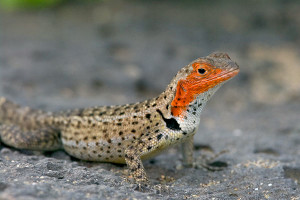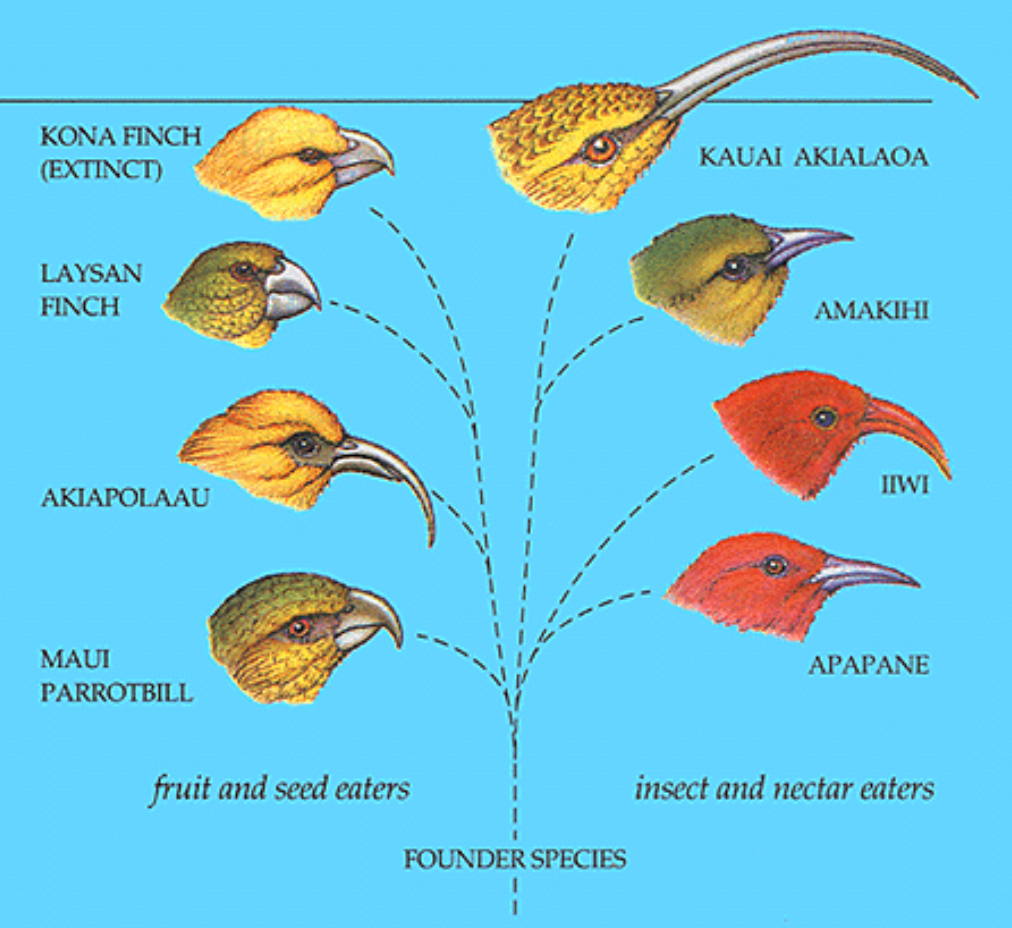2.15 Biodiversity & Adaptive Radiation
Biodiversity is a product of evolutionary processes
Mutation and migration all play a role in generating diversity, and selection and drift eliminate some of this diversity. Over time, isolated populations of the same species can diverge

so much that they are considered separate species. For example, an ancestral population of lizards, possibly from mainland South America, colonized the Galápagos islands (in the equatorial Pacific Ocean) millions of years ago. After many generations of mutation, drift, and selection, the colonizing population was sufficiently different from the parent population to warrant classification as a different species. This pattern was then repeated throughout the islands, with migration, drift, mutation, and selection all acting differently on different island populations. Thus, from one colonizing species, the archipelago now has several different species of what we call lava lizards. All of these lizards are endemic to the archipelago—that is, they are found nowhere else in the world (Figure 2.15).
Adaptive radiation occurs when one ancestral species leads to several descendent species as new habitats are colonized. There are many examples of adaptive radiation and endemism in island chains such as Galápagos (e.g., finches, mockingbirds, lava lizards, and Opuntia cactus) and Hawaii (e.g. honeycreeper birds [Figure 2.16], fruit flies, and silversword plants). Adaptive radiations are also common where habitats are fragmented (e.g., by mountain ranges, rivers, etc.)


